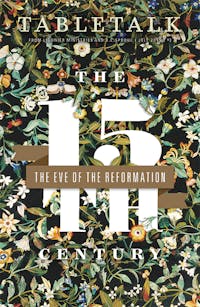
Request your free, three-month trial to Tabletalk magazine. You’ll receive the print issue monthly and gain immediate digital access to decades of archives. This trial is risk-free. No credit card required.
Try Tabletalk NowAlready receive Tabletalk magazine every month?
Verify your email address to gain unlimited access.
I’m not the world’s best shopper, and he may well be the hardest man in the world to shop for, and so I cringe each year as Father’s Day, Christmas, or my father’s birthday approaches. This year, however, I did well. I got my dad a nice plaque with a photo of Three Rivers Stadium, home to the Pittsburgh Pirates and Steelers for more than thirty years. The plaque also had a photo of the statue outside the stadium of the Great One, Roberto Clemente, one of the Pirates’ all-time greats. Plaques and photos, however, are pretty easy to come by. What was unusual about the plaque was this—it included a three-inch by three-inch strip of the actual artificial turf from Three Rivers Stadium, the very ground Roberto Clemente and the Steelers’ Franco Harris once trod.
I found this amazing gift through something even more amazing: the Internet. I’m still getting used to all that it can do, harnessing it to solve sundry shopping challenges. My computer and now even my phone have become magic boxes, opening up virtual vistas I couldn’t have dreamed of as a child. With the Internet, we do not have the old world plus the Internet, but rather a whole new world. I labor to make sense of the pre-Internet world to my children because this world is all they’ve ever known.
The Internet, however, is not the first new world to change the world. In 1492, Columbus sailed the ocean blue. Now, a strong case can be made that earlier European explorers landed on our shores. Indeed, I find such rather likely. But the successes of Leif Erikson and St. Brendan, however great they may have been, didn’t affect the world in the same way that Columbus’ did. He not only found a new world, but he came back to report on it (even if he wasn’t clear on what he had found). That is, it was Columbus’ discovery of the New World that actually changed both the New World and the Old.
Just as the Reformation a quarter of a century later would soon challenge the settled convictions of millions and would reshape the institutions that shape us, so the New World did the same for those who lived at that time. Imagine reading the newspaper (or for you younger readers, imagine logging on to your favorite news site) after word returned from the Americas. Not only was there an undiscovered, untamed land, virtually as large as the Old World, but there were people there. Thousands upon thousands living in multiple cultures, people about whom we had heretofore known nothing. Imagine the wonder of it all.
Soon, however, would you not be called out of your revelry to ask—and answer—this simple question: Given this earth-shattering news, what ought you to do? How do you respond to this development, which, to put it in modern terms, is not that far removed from finding not just sentient life but human life on the moon?
One of the great temptations that comes with the discovery of new worlds, whether they be the Internet or two massive continents, is to believe that new worlds call for new rules, that new worlds demand new ends. Such a temptation, however, is to be fought rather than succumbed to. What must we do in or about this strange new world? Seek first the kingdom of God and His righteousness.
The discovery of the New World did not bring a discovery of a new purpose. It did, however, provide a new opportunity to be about the business of the old purpose. Christians were called to bring the good news of the life, death, resurrection, and ascension of Christ to the New World. They were called to exercise faithful stewardship in the New World. They were commanded to make manifest the glory and beauty of the reign of Christ over all things.
How did we do? To be certain, we believers have much for which to repent in how we have responded to this amazing new world. And one would hardly confuse the New World today with a city shining on a hill. But some perspective would be more helpful. At the close of the fifteenth century, how many saints occupied the New World? If there were any, they likely could be counted just on your fingers and toes. Now, despite all our weakness and worldliness, despite the decline and retreat of the people of God, there are millions of the children of God laboring for the kingdom on these two continents.
The story, however, is not yet over. If God has been pleased to call in millions from this corner of His world where for centuries not one soul was redeemed, what might we hope for, what ought we to work for in the future? The kingdom of God is like a mustard seed, beginning as the smallest of seeds but growing until the birds of the air make their nests therein. There are old worlds and new ones. There are earthy worlds and cyber worlds. But one truth remains the same now and forever, that Jesus rules them all.
